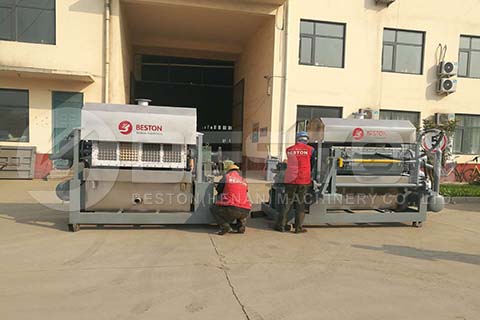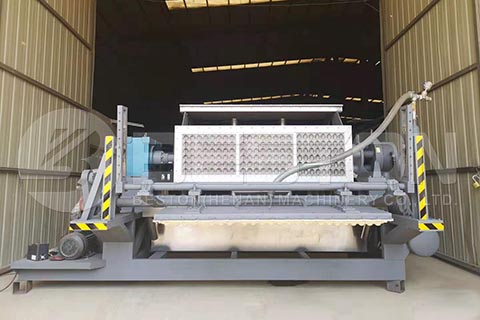Production of egg trays by employing recycled papers has become a lucrative venture considering its increasing demand. The initial products used to store and transport eggs were plastic. However, to reduce pollution, manufacturers have opted to make machines that can recycle papers, including old magazines, carton boxes, and old books. The egg tray making machine comes in varying sizes and functionality levels. The device involves a series of other mini equipment that use in sync to achieve this goal. Below is detailed information on the four stages.

Pulping.
The pulping phase is the first step of production. The system functions with the aid of a water source, a pool, and a pulp beater. Through physical input, the operator will feed the machine with the available waste paper. Water then gets added to the collection to ensure there’s the formation of a mixture. It is vital to make appropriate additions; otherwise, the next steps will not be efficient. It is also a way to prevent wastages. The pulp beater then thoroughly combines the two components to generate a uniform mixture. The pulping stage is critical as it determines the quality of output. You have to pay keen attention to all the steps.
Molding.
The second phase of production is the molding stage. The main equipment is the pulp molding machine. Upon the formation of the desired pulp, it gets conveyed to the next level through pipes. At the molding system, there are formation molds that will make the egg trays. These can come in varying sizes and shapes depending on the use of the end product. The egg tray making machine is a versatile piece of equipment as it can accommodate molds to form additional products for fruits, shoes, and coffee cups, among others. The pipes will release the pulp on the molds sufficiently. A vacuum pump will suck away any air from the materials To ensure they take the exact shape. The last step here involves blowing them off using an air compressor. The commodities will detach from the molding devices and land on a clear surcease, ready for the next step.

Drying.
The third step of paper egg tray production line is drying. At this stage, the egg trays are already in great shape, but they contain water. Since the pulp is quite thick, they have to get exposed to some heat before getting delivered to clients. There are three types of drying platforms employed in this process. Before making settlements, ensures your choice is adequate. The first two include a metal and brick egg tray drying system. The two are the most efficient and reliable as you can use them for small and large scale production. The last type is natural drying. It takes place under the sun. It is economical but can cause your business lots of inconvenience, thus ideal for small-scale companies.
Packaging.
Packaging and delivery is the final step. The egg trays will go through a hot iron press to ensure they get a more defined look. The operator will then oversee stacking in the storage boxes.
The egg tray production process is efficient as it works towards environmental sustainability. If you want more details about how to make egg trays from waste paper, please check the link here: https://bestonasia.com/how-to-make-egg-tray-from-waste-paper/.